September 28, 2017
Project: Urban Construction and Social Transformation – China
Project director: Liye Xie
In May-June 2017, Liye Xie conducted fieldwork at three early urban centres—Taosi, Erlitou, and Liangzhu, dated to 5000-3500 years ago—in the Central Plain (the heartland of Chinese civilizations) and the Lower Yangzi Basin in China. This is the preliminary research of Xie’s interdisciplinary project on urban construction and social transformation during the late Neolithic period and early Bronze Age in China. Xie’s project is collaborated with archaeologists from the Institute of Archaeology, Chinese Academy of Social Sciences and the Zhejiang Provincial Institute of Cultural Heritage and Archaeology. Financial support for this project was provided thanks to the Connaught New Researcher’s Award, UTM Research Office, and the Discovery Grant from the UofT Archaeology Centre.
During the trip, Xie led a team of local workers to build a section of a rammed-earth wall (4x0.5x1.2 square meters above the ground, and 4.3x1x0.5 square meters underground as the foundation) at Erlitou. Rammed-earth techniques in China were first employed for constructing floors, later for foundations, walls (for both houses and un-roofed enclosures), and platforms. Everything important during the dynasties, from burial structures to city buildings to imperial palaces, were built with the rammed-earth techniques. In the experiments, Xie constructed the wall with as many rammed-earth techniques as imagined possible 3500-5000 years ago. The construction experiments not only produced diagnostic traces for identifying the techniques employed at the sites of her research interest, but also generated data regarding the consumptions of soils, implements, calories, and time for estimating the costs of construction in the early urban centres. This wall was left exposed upon completion in late May for long-term observation of post-construction eluviation and bioturbation. Prof. Xie will come back to the wall every year to record any changes on the construction in order to estimate the life span and needs for maintenance for such construction.
During the trip, Xie also collected plethora of data from the earthen constructions and undisturbed soils at Erlitou, Taosi, and Liangzhu. Measurements of bulk density, penetration resistance value, water content, and particle size have been completed in the field and the lab. Comparative samples were also collected from a modern rammed-earth wall constructed about 30 years ago. Although still in the process of data analysis, the results already show interesting patterns regarding the quality and construction methods of the earthen constructions in the three sites. Results from particle size analysis suggest that the source of soils for constructions in Taosi and Erlitou were both from the local sterile soil. Results of bulk density analysis suggest that the quality of the Taosi earthen construction was lower than that at Erlitou. Liangzhu in the Lower Yangzi Basin shows rather different construction techniques and alternative strategies for soil procurement. The soil particles were clearly different from the local Xiashu Loess, so the next step is to locate the source of soil procurement for the construction.
New questions also arose based on the data from this trip and will guide the research in the coming year. In the next field trip, Xie will focus on identifying the construction techniques employed at Taosi and Liangzhu, and locate the source of soil for construction at Liangzhu. Future construction experiments will better resemble the techniques and quality of the earthen construction at the studied sites to provide a more reliable basis for estimating the costs of soils, implements, labour, and time for urban construction.
Photos
All photos © Liye Xie. All Rights Reserved. Photos by Junfeng Yang.
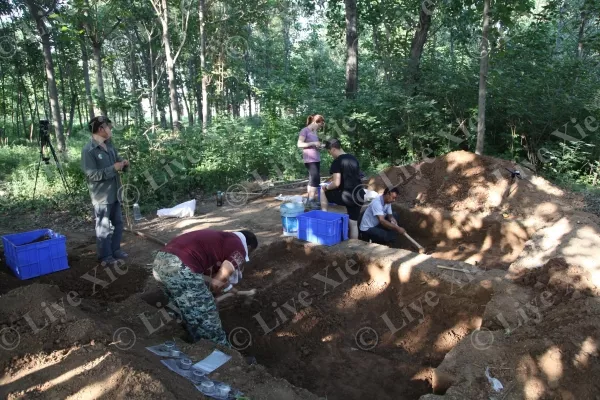
Soil procurement
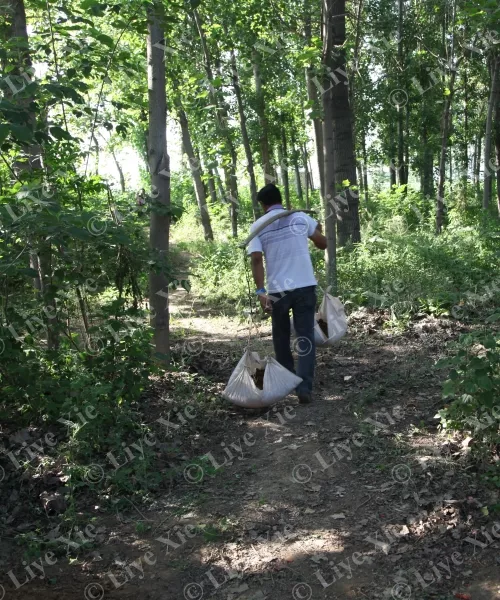
Soil transportation
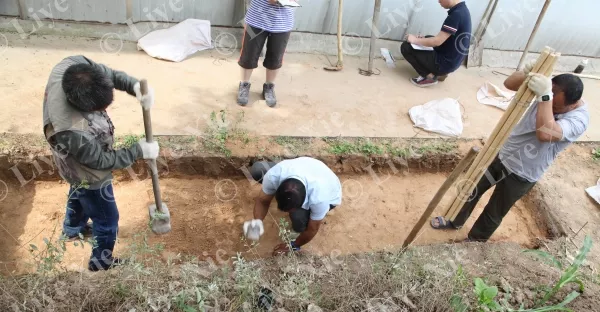
Constructing of the wall foundation with three different rammers (from left to right): a stone rammer with wooden handle, hand-held cobble stone, bundled wooden bars
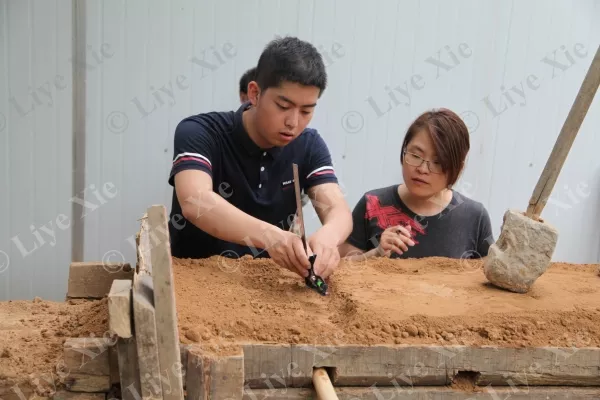
Measuring the effectiveness of the rammer
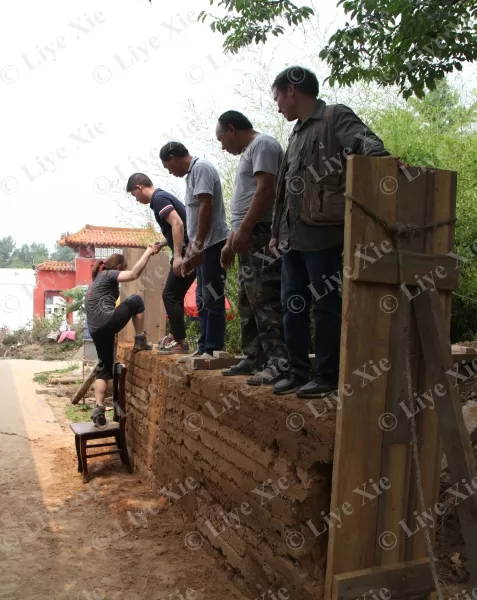
The completed wall section (4x0.5x1.2 m2 above the ground, and 4.3x1x0.5 m2 underground) and the construction team in May 2017. Individuals from left to right: Liye Xie (the PI), Duo Wang (Research Assistant), construction workers Gaoxiang Song, Xiaoguang Xu, and Facheng Wang.
The following photos show collecting soil samples from the archaeological sites
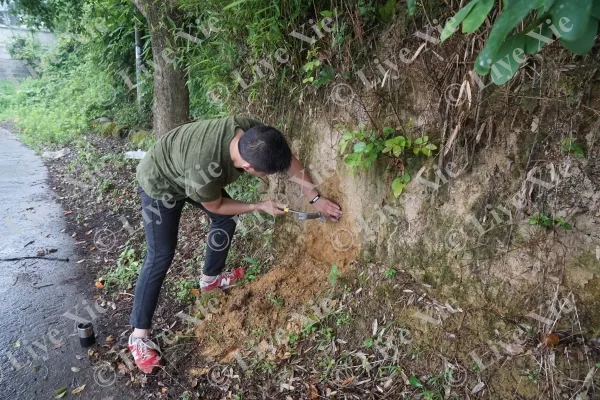
Liangzhu
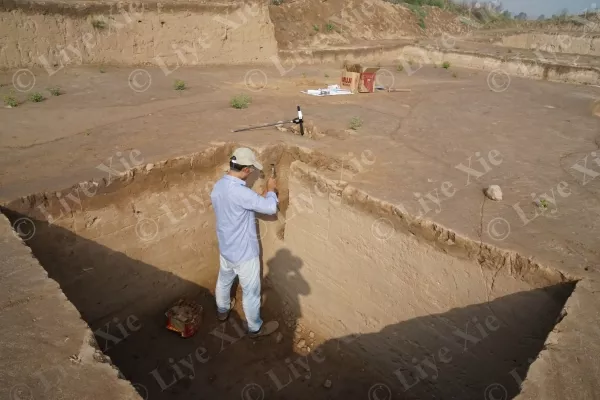
Taosi

Erlitou
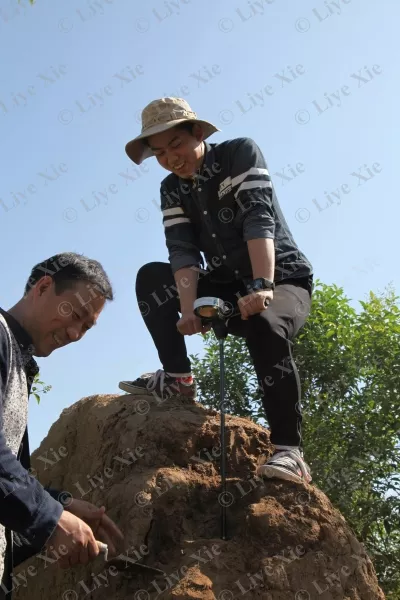
Measuring soil penetration resistance value and collecting samples from a rammed-earth construction built about 30 years ago in Henan
